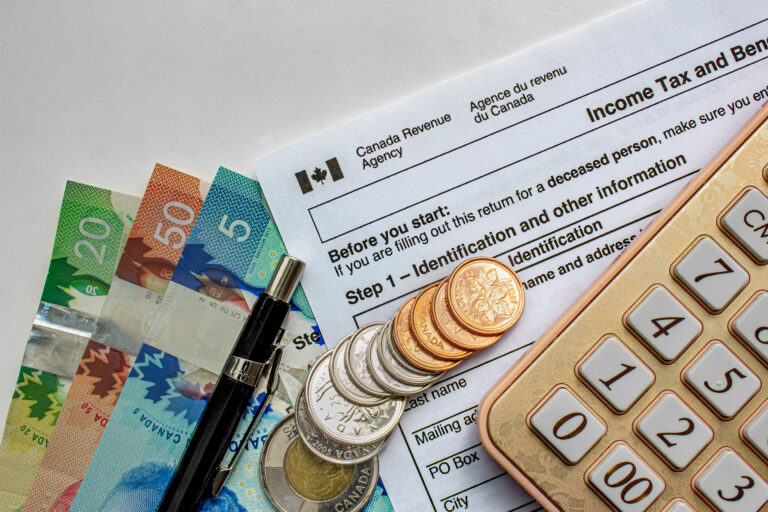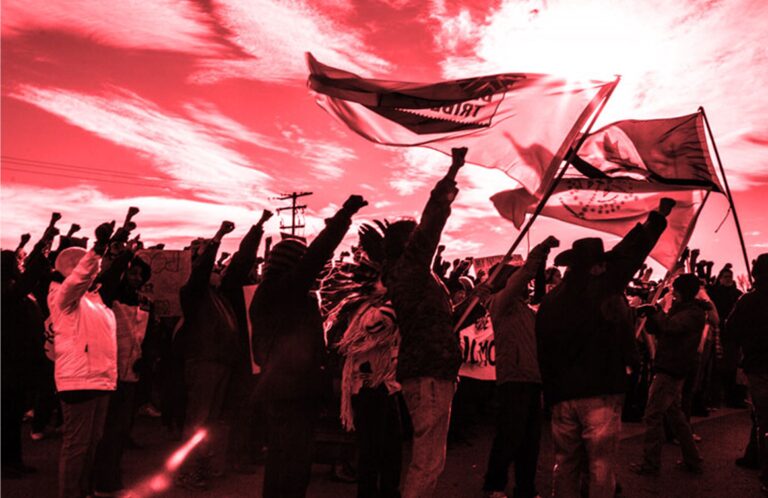Name something you can find only in Canada. If we eliminate easy answers such as wildlife oddities, three-down football and maple-flavoured pastries and focus instead on major transportation infrastructure hubs, there’s just one correct response: the unique and deeply-flawed Canadian model of airport ownership.
While the defects of our national airport system have contributed to decades of needlessly high travel costs for Canadians and lacklustre performance by local airport authorities, these issues have been largely overshadowed by the tremendous growth in worldwide air travel throughout the early 21st century. A rising tide lifts all airports, so to speak. Canadian airports have added gleaming new terminals, opulent concourses, massive parkades and barely-needed runways, all the while remorselessly jacking up fees. And everyone just flew more and more. To many, these civic monuments to emplaning and disembarking were held to be signs of their city’s − and perhaps their own – increasing worldliness and sophistication.
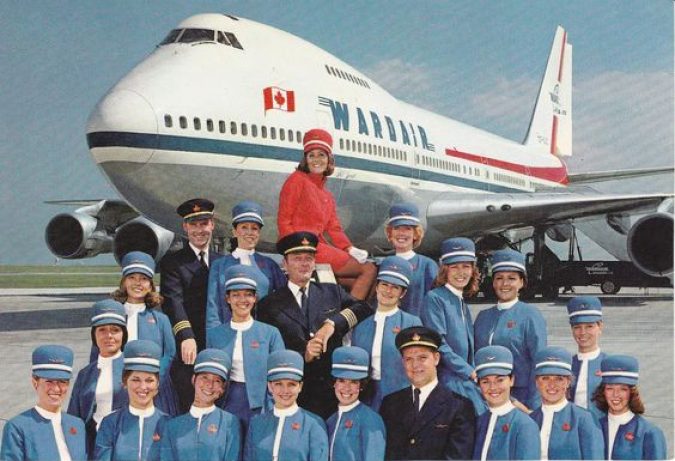
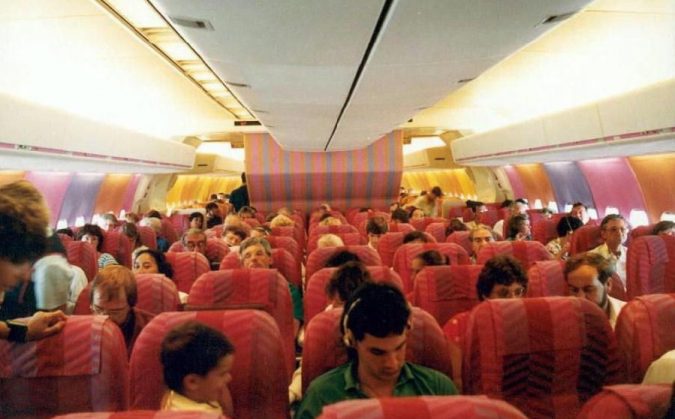
Now, however, with global air passenger travel at a near-standstill and no reasonable prospect for its revival any time soon, the problems inherent to Canada’s airports have sparked a financial crisis unprecedented in the air travel industry. Earlier this month, for example, Calgary International Airport’s governing authority issued a public warning that it was facing a $67 million deficit and will soon need as much as a quarter of a billion dollars in additional financing simply to keep planes flying in and out of Calgary for the foreseeable future.
Though it seems inconceivable that a modern country as large and sparsely populated as Canada could function without air travel, the operators of Canada’s airports are indeed facing a grave fiscal reckoning.
What’s to be done? The only realistic solution to this chaos is a dramatic course correction that once and for all eliminates the longstanding errors of federal airport policy. Attention passengers: it’s about to get bumpy.
Airport Crisis: Global Edition
The past half-century has been remarkable for the apparently unstoppable growth in air travel around the world. Due to sweeping deregulation, a rapid expansion in service and a general decline in the price of air travel in numerous international markets, global passenger volumes have doubled every 15 years since the 1970s. Even major crises such as the Gulf War or 9/11 were mere blips on the seemingly endless upward trajectory of commercial aviation. But that came to a dead stop in March, courtesy of the coronavirus pandemic. And the impact has been felt by airports as much as airlines. So far this year, the Montreal-based International Civil Aviation Organization estimates the decline in air traffic has cost the world’s airports US$36 billion in lost revenue.


In Canada, air traffic volumes fell by more than 90 percent in April and May and once-teeming terminals were instantly turned into ghost towns. Even in June some airports, Calgary International for example, were still down by 90 percent. Over the full year, Calgary expects to see an overall 65 percent drop in volume; this entails a return to levels not seen since 1996. Several smaller cities, including Saint John, New Brunswick and Prince Rupert, B.C. experienced a complete loss of scheduled air service for several months. And in expectation of a lengthy depression in tourism and business travel, many airports have retrenched, some laying-off up to one-third of their staff.

“We don’t expect recovery in our sector for many years,” Canadian Airports Council (CAC) chair Joyce Carter told a House of Commons committee in May. In an earlier statement she warned of “the grim reality of an immediate and dangerous cash flow shortfall” at the nation’s airports. Taking the theme even further, Conservative MP Michael Kram of Regina-Wascana recently declared in Question Period that “Canada’s airports are teetering on the edge of bankruptcy.” Even accounting for the usual hyperbole of political debate, Kram’s spectre of a wave of airport bankruptcies sweeping the country is no idle exaggeration.
Though it seems inconceivable that a modern country as large and sparsely populated as Canada could function without air travel, the operators of Canada’s airports are indeed facing a grave fiscal reckoning. Yet while all airports around the world are dealing with serious financial issues, the calamity in Canada appears substantially worse. And it is largely self-inflicted. How did we manage to do this to ourselves?

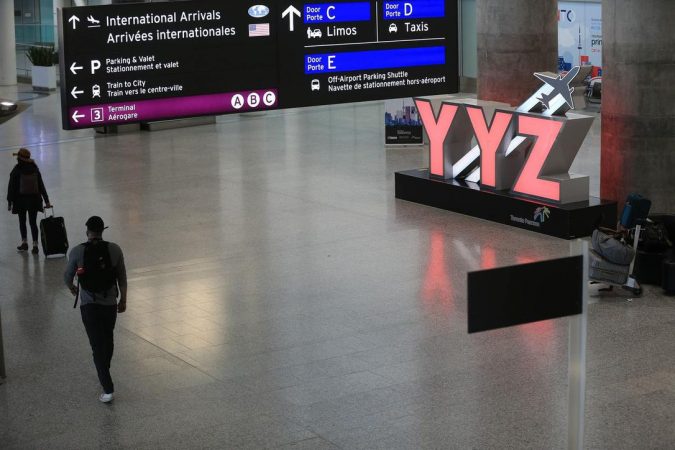
The Origins of Canada’s Absurd National Airports System
The story begins in the cash-strapped early-1990s, a time when Ottawa realized it could no longer afford required enhancements to the federally-owned airport system. The earlier Progressive Conservative government of Brian Mulroney had planned to follow the common European model and allow substantial private-sector investment, operation and even ownership of the nation’s airports. His successor, Liberal Prime Minister Jean Chrétien, nixed the idea on ideological grounds. Unwilling to accept any form of privatization but unable to continue with full public ownership, the Liberals invented their own unique style of airport tenure.

Beginning in 1992, the 21 most important airports in the National Airports System were handed over to locally-based, non-profit and non-share-capital (i.e., non-equity-issuing) airport authorities under 60-year leases. These leases require annual rental payments to Ottawa based on gross airport revenues and can be extended by another 20 years through negotiation. At the end of the term, all land and buildings are to be handed back to federal control. The airport authorities thus have no sustaining, long-term existence beyond serving Ottawa’s bidding. No other country in the world operates its airports this way.
This unusual arrangement has afflicted Canada’s air transportation network with numerous built-in problems. The most significant issue concerns the lease payments, among an airport’s biggest expenses. Last year Ottawa collected $412 million this way and, since 1992, it has reaped a cumulative $6.5 billion. But if the federal government is the ultimate owner of the airports, and if the airport authorities are simply agents acting on its behalf, then Ottawa is essentially paying those fees to itself. And in doing so, it is making the country’s airports decidedly less competitive. Hefty lease payments are a major factor behind high passenger fees that push many Canadian travellers to drive across the border to nearby U.S. airports, such as Buffalo, New York or Bellingham, Washington, to find less expensive international flights.
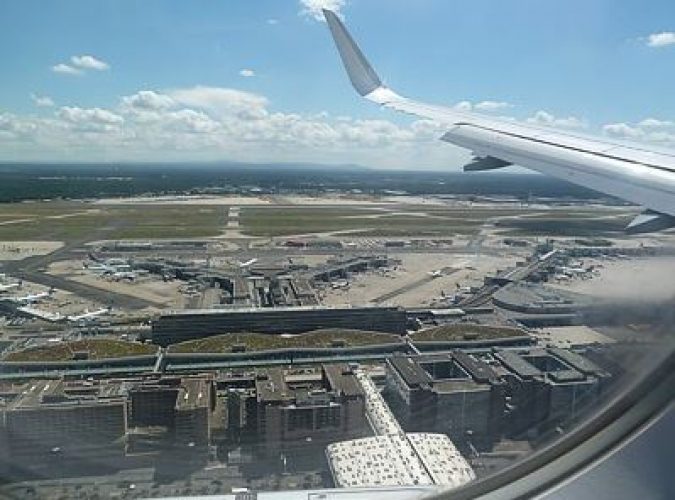

That lease payments are based on gross revenue rather than operating income also means airport authorities have limited incentive to maximize profitability. And that harms rather than helps air travellers. In 2017, a C.D. Howe Institute memo promoting airport privatization noted that for-profit Australian airports derive more than half their income from “landside” revenue sources – non-aeronautical fees such as retail sales and store rents. Canadian airports, by contrast, tend to ignore these extra revenue opportunities and lean much more heavily on ticket fees and airport improvement charges that airlines then pass along to their customers. “For-profit airports are more efficient and passenger-friendly,” the C.D. Howe report concluded, pointing out that airport charges tend to fall when airports are privatized.
Back in 2005, Giovanni Bisignani, then-director of the International Air Transport Association, decried Toronto’s extravagant $4.4 billion Terminal 1 as a “Versailles with boarding bridges.” He’s not alone.
Another significant feature of the Canadian airports authority model is the fact they are prohibited from raising capital by selling shares, as is possible with privately-owned airports. This means Canadian airports must rely solely on bond financing to fund large capital projects. Initially this was not considered a problem, since investors were willing to accept favourably low interest rates given the quasi-federal connection and airport authorities’ broad powers to raise fees from users. Along with the trend of ever-rising air travel, the perceived risks of financing airports appeared to be close to zero.

Prior to the coronavirus, the biggest problem stemmed from the convergence of airport authorities’ non-profit status, their reliance on bond financing and their unlimited taxing powers. All these factors together encouraged a decidedly palatial approach to capital projects. The propensity to over-build or “gold-plate” Canada’s airports has been a habitual complaint within the airline industry, which ultimately foots the bill for all renovations and expansions. Back in 2005, for example, Giovanni Bisignani, then-director of the International Air Transport Association, decried Toronto’s extravagant $4.4 billion Terminal 1 as a “Versailles with boarding bridges.” He’s not alone.
“Airports have become the cathedrals of the 21st century,” laments Barry Prentice, an air industry expert at the Asper School of Business at the University of Manitoba. A former member of the Winnipeg Airport Authority’s board of directors, Prentice levels a similar complaint to Bisignani at his local airport. In 2012 the authority demolished a perfectly serviceable terminal after putting up something far grander and more modern at a cost of approximately $600 million. That debt is still on the books, which explains the recent increase in the airport improvement fee to $38 per passenger. “I consider Winnipeg’s airport to be our version of Montreal’s Olympic Stadium,” Prentice snaps. “Maybe my grandchildren will live to see it paid off.”

The inclination to build large and lavishly underlies the massive bond-financed airport spending binge across the country over the past decade. As a result of various renovations and expansions, the nation’s major airports now owe a collective $15.2 billion in debt. Industry publication Western Aviation News points out that sum exceeds the combined provincial debts of Saskatchewan, Newfoundland and Labrador, New Brunswick and Prince Edward Island. Still, back when international air travel showed no signs of slowing down, revenue was flowing freely and investors were happy to keep buying airport bonds, such a massive debt load was considered entirely sustainable. Covid-19 put an end to all that.
A Natural Experiment
Robert Poole, director of transportation policy at the Washington, D.C.-based Reason Foundation think-tank, observes that the global coronavirus travel shock provides a useful natural experiment in financial resiliency and the risk implications of various airport ownership styles. “We’ve certainly seen a wide variety of responses,” he says in an interview, surveying the reaction from fully-privatized operations in Britain and Australia, public/private partnerships in Europe and South America and entirely government-owned and operated airports in the United States.
U.S. airports have received US$10 billion in direct emergency funding from the federal government as part of the US$1.8 trillion CARES pandemic package. Poole notes this means American taxpayers are entirely on the hook for the survival of their airports. In contrast, Britain’s Chancellor of the Exchequer Rishi Sunak told airport executives in March that “taxpayer support would only be possible if all commercial avenues have been fully explored, including raising further capital from existing investors.” With no immediate prospect of a government bailout, privately-owned British airports have retrenched and refinanced. London City Airport, which caters almost entirely to business travellers, closed for three months rather than operate at a loss. Many public/private partnership operations, such as Amsterdam’s Schiphol Airport, have announced cash-conserving measures such as reduced or halted dividend payments to government and private owners alike.


In Canada, however, airports face the worst of all possible worlds. Cutting dividends or raising additional capital from equity investors is impossible, since they have never been allowed to issue shares; and bond holders are typically much less willing to soften their terms than equity owners. As well, there’s no immediate prospect of a huge government rescue payment given the airports’ arm’s length distance from Ottawa. “Canadian airport revenues are all based on passenger numbers,” says the University of Manitoba’s Prentice. “But their costs [including bond payments] are fixed. That leaves them in a real squeeze.”
In March Ottawa announced plans to forgive up to $331 million in ground lease payments due for the remainder of this year. But since lease payments are based on current revenues, which have virtually collapsed, the actual value of the forgiveness will be much less than advertised. Perhaps effectively zero. The CAC has instead asked for a five-year lease payment holiday and more direct government aid, such as interest-free loans or grants. Ottawa has yet to respond.

With only Victoria, Charlottetown and Saskatoon’s airports being free of debt, the interest payment squeeze has nearly every airport in Canada in a tough spot as bonds payments come due. Toronto’s Pearson, for example, has scheduled a bond holders’ meeting for the end of July to request relief from some of its obligations, including lifting the maximum amount of debt it can issue. Pearson already owes $6.4 billion but, to face down its debt crisis, the airport authority apparently thinks it may need to borrow even more. Other airports are pleading for greater political attention. Regina Airport Authority president James Bogusz told CBC News in June that, “We’re burning through our cash reserves,” and that he’ll require a federal government bailout by the end of the summer just to keep the lights on.
This debt squeeze is likely tightest at Calgary International Airport. Due to a huge 2016 renovation that added a second main runway and an expansive new international terminal – all state-of-the-art and cathedral-like, of course − the airport, call sign YYC, has $2.9 billion in debt. As the country’s fourth-busiest airport it now boasts the second-highest total debt load, surpassed only by Toronto’s. On a per-passenger basis, however, Calgary’s debt exceeds that of Toronto by a large margin. In fact, its annual interest payments are nearly three-times what it spends on salaries. The hefty price tag for the expansion explains why Calgary posted a combined $300 million in annual losses in 2017, 2018 and 2019 at a time when most other Canadian airports were still enjoying healthy pre-pandemic profits.
Earlier this month, YYC president Robert Sartor said he will need to borrow an additional $250 million simply to survive until the pandemic’s effects subside, in perhaps three to five years. “This is not a handout or a bailout, but we cannot afford to pay interest on the debt that we take on,” Sartor explained to the media. Then again, that sure sounds like a bail-out.

YYC spokesperson Reid Fiest defends his airport’s 2016 renovation as a project with a 40-year lifespan that will far outlive the pandemic. “Between 2000 and 2015 passenger levels nearly doubled to almost 15.5 million,” he says via email, suggesting there’ll be a return to former levels of growth once the current unpleasantness is over. Fiest also argues the airport’s losses from 2017 to 2019 were due to non-cash charges for depreciation and amortization, and that the airport was cash-flow-positive throughout this time.
Academic Prentice admits a lot of Calgary’s troubles are likely connected to an earlier downturn in the oil and natural gas industry and the long planning cycle required for airport renovations. Some bad luck was certainly in play. But this is also known as “risk” and “uncertainty”, conditions that nearly all businesses face and are expected to overcome. The fact Calgary succumbed to the Canadian propensity for “gold-plating” its airport cannot be overlooked as a key cause of its current troubles. “As a regulated monopoly, they figured they could charge whatever they wanted. So what could go wrong?” asks Prentice rhetorically of the expansion. “No one saw the pandemic coming, but they certainly weren’t prudent in their plans.”
In addition to its opulent, cavernous new international terminal, control tower, “corporate” centre and other accoutrements, Calgary’s authority also saw fit to install Canada’s longest runway – a 14,000-foot concrete behemoth more suited to U.S. Air Force B-52 bombers or 850-passenger A-380 double-deck aircraft than the Boeing 737s that often use it. Although YYC already had an 8,000-foot second runway that could have been strengthened and lengthened, the airport instead forged ahead with the brand new runway, which also required construction of a nearly $300 million road tunnel running beneath, causing years of delay. Comparing it to the traffic loads and runway counts of much busier airports in Europe raised the question of whether it was even needed – or whether a less costly answer lay in more efficient operations.

The entire, lavish project generated so much controversy and delay that it entered service just in time for Calgary’s five-year economic downturn and the pandemic. Complicating matters for Alberta taxpayers today is that YYC’s entire debt is owed to the Alberta Financial Capital Authority, a provincial body that lends to public-sector entities at favourable interest rates. Likewise, Edmonton International Airport owes approximately 85 percent of its $1 billion debt to the AFCA following its own terminal expansion in 2012.
So while Toronto and other airports may be asking institutional bond investors for help (perhaps including a “haircut” or partial debt forgiveness) to stay solvent, Calgary and Edmonton will instead be pleading with governments to solve their financial problems. “We are asking the Government of Canada and the Province of Alberta to come forward with financial support to prevent long-term and irreversible impacts as a result of current fiscal challenges,” says YYC spokesperson Fiest. As the Calgary Airport Authority’s creditor, this means Alberta Premier Jason Kenney could eventually face the unpleasant dilemma of lending even more money to YYC at a time of growing public deficits and debt, or allowing the airport to default on its interest payments and becoming an airport owner in the process.
Can An Airport Even Go Bankrupt?
Reason Foundation’s Poole, who follows air transportation developments around the world, says he has heard no discussion of privatized airports in Britain or elsewhere fretting over an immediate risk of bankruptcy. While many privately-owned airports have had their credit ratings downgraded, their long-term outlook remains positive and they continue to raise funds from investors. Meanwhile, for government-run operations as in the U.S. or China, airport insolvency is obviously an impossibility. Only in Canada does airport bankruptcy currently appear to be a pressing concern. “I can imagine a bankruptcy scenario for an airport like Calgary that, in hindsight, got itself in over its head with all-debt financing,” says Poole.
Given the convoluted nature of Canadian airport ownership, however, whether it is even possible for an airport to go bankrupt remains a curiously vague issue. The CAC declined to discuss the topic, citing “legal questions out of our area of expertise.” Several large investment firms that hold airport bonds also took a pass on commenting to C2C Journal. YYC’s Fiest says that, “similar to any other commercial enterprise, we understand that airport authorities are able to seek relief under bankruptcy and insolvency legislation.”
The fact Calgary succumbed to the Canadian propensity for “gold-plating” its airport cannot be overlooked as a key cause of its current troubles. “As a regulated monopoly, they figured they could charge whatever they wanted. So what could go wrong?”
Prentice, however, figures no airport financial crisis is likely to get as far as a bankruptcy application. Since Ottawa still owns the land and is set to take back all land and improvements when the leases expire, he assumes the federal government must therefore also be on the hook for any debt owed by those airport authorities, even if it claims otherwise. “If the debt has been taken on by an agent of the government, then ultimately it will be responsible for covering that debt,” Prentice opines. If he’s right, Ottawa will have to pay up.
Then again, whether bond holders can actually force the federal government to make good on $15.2 billion worth of airport bonds may be immaterial. The mere prospect of private creditors attempting to seize control of a vital piece of Canadian transportation infrastructure might be sufficient motivation to force Ottawa to grapple with those thorny issues of ownership, sustainable financing and privatization that it has so long ignored. And that could be the best piece of news Canadian airports will hear throughout this crisis.

During his first term, Prime Minister Justin Trudeau briefly toyed with putting some of the country’s biggest airports up for sale. In 2016 a review of Canada’s Transportation Act, chaired by former cabinet minister David Emerson, strongly recommended the government adopt a new policy of airport privatization. This was followed by a further consultant’s report on an airports sale.
But like Chretien before him, Trudeau showed no appetite for involving the private sector. “That’s always one of the easy, quick things people jump to,” Trudeau told Bloomberg News in April 2017 about the idea. “I’m interested in other things.” While Trudeau claimed his new Canada Infrastructure Bank was well-placed to facilitate future airport investments in an Ottawa-friendly manner, that has so far not been the case.
With Ottawa’s current financial situation becoming as constrained by a ballooning public debt as it was in the early 1990s, and with several major airports clearly facing an existential crisis, privatization might just manage to force itself back on the table despite traditional Liberal sensibilities. “It will depend on whether the federal government has the stomach for even more debt,” predicts Prentice. Faced with having to backstop airport authorities through a massive debt crisis, he figures the Liberals might soon ditch their ideological concerns and “choose to start selling assets.” Reason Foundation’s Poole concurs. “There are big problems with the Canadian airport model and it needs a serious review and rethink,” he says. “There’s a lot to be said for even partial private ownership.”
Putting a Price Tag on Canada’s Airports
So what might Canada’s airports be worth? For the past four years, financial analyst Ian Madsen has been producing valuation reports on federal and provincial Crown corporations for the Winnipeg-based Frontier Centre on Public Policy. In 2019, he shifted to airports, completing studies on operations in Toronto, Montreal, Ottawa, Vancouver, Halifax and Edmonton. His market-based estimates range from $10 billion for Toronto’s Pearson International to $1.25 billion for Halifax’s Robert Stanfield International Airport. Madsen, who previously had a long career in the global investment industry, expects to finish his valuation report on Calgary’s troubled airport later this summer. A separate C.D. Howe Institute study in 2017 put the total value of Canada’s airports at between $7.2 billion and $16.6 billion.
“All of the airports I have looked at have more debt than is comfortable,” Madsen says, a result of the peculiar Canadian requirement for all-debt financing. “Compared to figures for airports that are publicly traded around the world, the prospects for Canada’s airports improve dramatically when that debt is reduced.” After his deep dive into the finances of Canada’s major airports, Madsen figures the optimal path is a gradual privatization process in which the sale of the first 25 percent of an airport’s equity is allocated to paying down debt in order to improve the attractiveness of subsequent share issues. There’s precedent for this kind of process; the Chretien Liberals themselves privatized Petro-Canada, the federally owned oil producer, in a series of “tranches” extending from 1990 through 2004.
The mere prospect of private creditors attempting to seize control of a vital piece of Canadian transportation infrastructure might be sufficient motivation to force Ottawa to grapple with those thorny issues of ownership, sustainable financing and privatization that it has so long ignored.
And while Calgary’s airport appears to be in the most dire need of an equity infusion, Madsen figures its parlous debt situation makes it the least attractive candidate. “There’s no easy way out for Calgary − their interest expense is particularly crippling,” he notes. “The outlook is so bleak that I wonder if private equity investors would be willing to take a minority position. Probably not.”
As for silver linings, Madsen suggests that if the province does find itself in control of YYC due to default or some other financial calamity, the event could serve as the catalyst for a major restructuring involving both the federal and provincial governments. One attractive option would be to eliminate those problematic ground lease payments in exchange for a small federal equity stake in a reconstituted Calgary airport. This would provide greater clarity on the ownership question and pave the way for a much-needed infusion of cash from private investors. Of course, such a template need not be exclusive to Calgary. Every airport in the country, regardless of its current financial situation, could benefit from an end to ground leases and the opportunity to seek out private investment.
Clarifying who ultimately owns Canada’s airports and paving the way for equity investment “would make them more robust and financial viable, and give them greater flexibility to meet future capital expenditures,” says Madsen. “It just makes a lot of sense.” He notes that despite all the current difficulties, pension funds and other institutional investors with very long investment horizons still consider airports to be attractive investment opportunities, and demand would likely be high.
Privatizing airports and turning them into genuine commercial enterprises would enable the application of business principles to every aspect of their operations – including a sharper eye on staffing levels and compensation, more competitive provision of services and greater pursuit of revenue-generating opportunities to avoid the endless jacking-up of fees borne by airlines and consumers. Entry by private investors would also put a stop to costly, gold-plated expansions, as plans for any terminal expansions or new runways would be made on more practical, profit-oriented grounds.
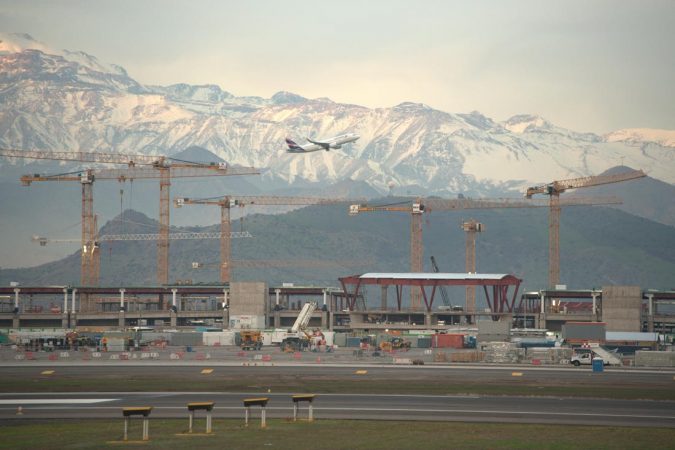

Reason Foundation’s Poole points out many private or public-private airports have embarked on major expansion projects in recent years without problems of monument-building or glory-seeking. “It’s been remarkable to see the level of significant private investment in productive airport infrastructure around the world, particularly in South America and Europe,” he says, reeling off examples in London, Santiago, Chile and Lima, Peru. “They have all added new runways and major terminal expansions, but without any complaints that they’re constructing Taj Mahals. And they’re not putting taxpayers at risk either.”
Finally, we must keep in mind that despite their current financial problems and ownership confusions, Canada’s airports are not going anywhere. Bankruptcy for them, if it occurred, would not be the same as a liquidation . “Airports are absolutely essential to Canada,” says Prentice. “We can’t live without them.” Quite so. Nor can they be credibly repurposed, picked up and moved, or their pieces reused. But that doesn’t mean they can’t be better managed, better funded and better suited to the needs of Canadian travellers once the pandemic finally ends and the possibility of flying “friendly” skies around the world returns once more.
Peter Shawn Taylor is senior features editor at C2C Journal. He lives in Waterloo, Ontario.
